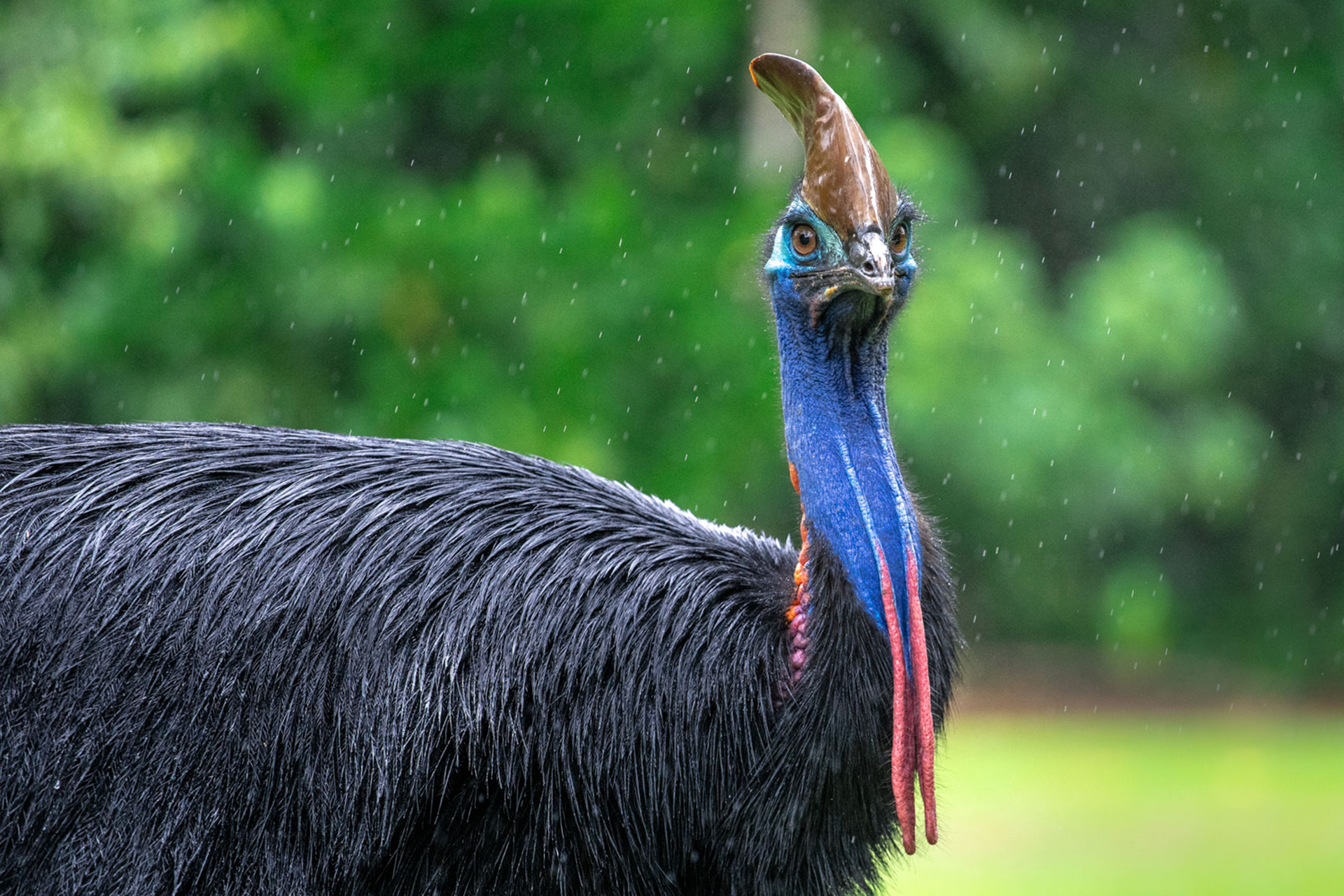preahvihearhotel.com – The southern cassowary, a magnificent and somewhat intimidating bird, is a true marvel of nature. As one of the world’s largest flightless birds, it commands respect and evokes a sense of wonder with its striking appearance and powerful physique. Found in the tropical rainforests of northeastern Australia and parts of New Guinea, this ancient creature is a living link to the prehistoric past.
A Unique and Striking Appearance
The southern cassowary is instantly recognizable by its distinctive features. Its glossy black plumage, coupled with a vibrant blue neck and bright red wattles, creates a striking contrast against the lush green backdrop of the rainforest. Atop its head sits a distinctive casque, a bony helmet-like structure that adds to its imposing appearance. This casque, while its exact function remains a mystery, is thought to play a role in courtship displays or territorial defense.
A Powerful Force of Nature
Don’t be fooled by their slow and deliberate gait; southern cassowaries are incredibly powerful animals. Their muscular legs, equipped with sharp claws, can deliver a devastating kick. This adaptation has made them formidable predators, capable of taking down small mammals and reptiles. However, their diet primarily consists of fruits, making them important seed dispersers in the rainforest ecosystem.
Solitary Existence and Breeding Behavior
Southern cassowaries are solitary creatures, coming together only to mate. The breeding season typically occurs during the wet season, when food is abundant. The female cassowary lays several large, green eggs in a simple nest on the forest floor. The male takes on the responsibility of incubating the eggs and raising the chicks, a unique role reversal in the bird world. The chicks, initially covered in striped down, are highly vulnerable to predators. The male cassowary fiercely protects his offspring, often leading them through the dense rainforest undergrowth.
Conservation Challenges and Human-Cassowary Conflict
Despite their impressive adaptations, southern cassowaries face numerous threats, including habitat loss, fragmentation, and human-wildlife conflict. As human settlements encroach on their natural habitat, encounters between cassowaries and people have become more frequent. Road accidents, dog attacks, and deliberate harm pose significant risks to these magnificent birds.
Conservation efforts are underway to protect southern cassowaries and their habitat. These initiatives involve habitat restoration, public education campaigns, and the establishment of wildlife corridors. By understanding and respecting these magnificent creatures, we can ensure their survival for generations to come.
The Southern Cassowary: A Symbol of the Rainforest
The southern cassowary is more than just a fascinating bird; it is an integral part of the rainforest ecosystem. Its role as a seed disperser helps maintain the diversity and health of the forest. By protecting the southern cassowary, we are safeguarding the delicate balance of the rainforest and ensuring the survival of countless other species that rely on this vital habitat.
